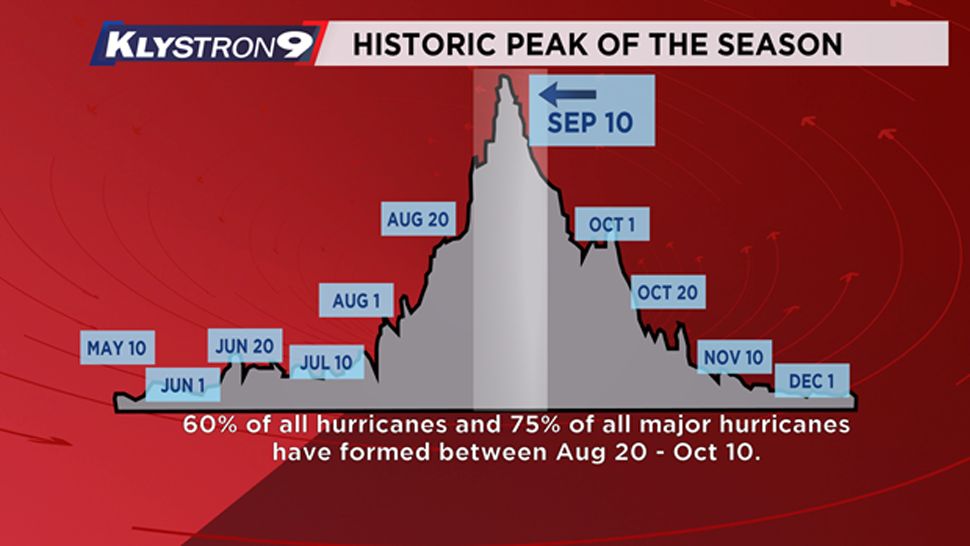ST. PETERSBURG, Fla. — We often think of the peak of the hurricane season as the early to mid part of September.
But, even though the season begins June 1st and last for 6 months, there is a period of time from mid August through early October where we see the highest frequency of tropical activity.
There is a real reason for this.
During the six months of the hurricane season, we may be tracking tropical waves off the coast of Africa every 2 to 3 days. That means that there may be as many as 80 to 100 tropical waves during a hurricane season.
However, early in the season those waves have a lot going against them. Water temperatures haven’t really warmed up too much and there is still a lot of wind shear present as the winter and spring time weather patterns still remain at higher latitudes.
Then, late in the season, even though water temperatures are warm enough, the wind shear picks up again as the season transitions in the Northern hemisphere toward Autumn and then Winter. The wind shear, as we often discuss, disrupts the potential development of tropical systems.
As a result, during that 6-8 week or so period from late August through Early October, historically about 60 percent of all hurricanes occur, and about 75 percent of all major hurricanes occur.
To go even deeper into this, one of the parameters we measure is tropical storm, hurricane, and major hurricane days. That is basically how many days during a season,there are major hurricanes present (using the major hurricane days example).
If two major hurricanes are occurring at the same time over the period of one day, that would count as TWO major hurricane days. Well, during that period from late August to early October, 97 percent of major hurricane days historically occur.
Breaking it down statistically, we can point to Sept. 10 - Sept. 14 and the statistical midpoint of the hurricane season.
So as we get later into September and certainly into October, we can feel a lot better about more infrequency of tropical development.



